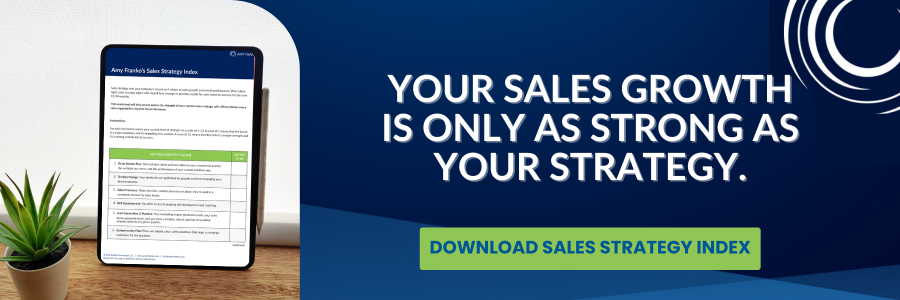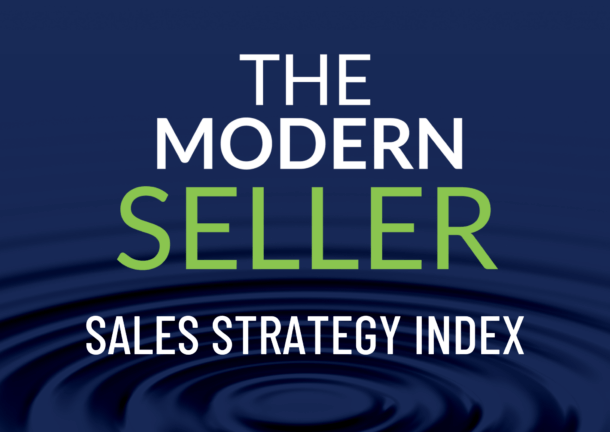Adapt Sales Strategy: Buyer Preferences Change, Approach Must Too.
While much is written about the changing of buyer preferences in strategic selling, don’t let that distract you because the foundation of what they are looking for remains the same as it always has.
What Does a Decision Maker Require from Today’s Sales Professional?
Above all, decision makers want confidence in navigating their way forward in ambiguous environments. They also want confidence in making pivots on the path as needed. There are two questions we can always ask ourselves as we work with our clients. 1) What is in their highest interest? and 2) How can I help them accomplish those interests?
- Value is at the heart of what they are looking for, and it’s our role to understand what they value, both organizationally and personally in a relationship with us.
- They want to assess their current situation as quickly and effectively as possible and to translate the information they have at their disposal.
- They want to look good in the eyes of their leadership, stakeholders, and the board of directors.
- They want new ideas but often don’t have the bandwidth to dedicate time to the creative process to cultivate those ideas.
- They seek active collaborators and partners in the decision process, not sideline spectators simply taking the next order.
The Misconceptions Preventing You from Reaching Decision Makers
The perceived change in buyer preferences has led to some misconceptions in how we access and relate to those decision makers. I’ll share some of the common misconceptions and the mindset shift that’s important to make.
Misconception 1: Decision makers want a sellerless experience.
My perspective: Think about your own sellerless interactions. How did you arrive at your decision to purchase? What was the risk? What were the pricing thresholds? If you encountered any issues, how were those issues resolved? How happy were you overall with the result and would you repeat that process? Decision makers want a sellerless experience in the absence of value, or with simplistic, low-risk transactions. Additionally, one common misstep is to use “sellerless” and “virtual” synonymously. While most of my sales interactions in the last two years was conducted virtually, it wasn’t conducted in a way that was “sellerless.” I had to find new ways to connect with my decision makers in the absence of in-person interactions.
Misconception 2: Non-direct methods are the only way to reach a decision maker.
My perspective: Examples of these methods include social media posting, inbound lead generation campaigns, opt-ins for thought leadership downloads from your company’s website, and podcasts. These activities are all valuable, and I’ve generated leads through all of them. But today we’re placing an overemphasis on them to reach a decision maker. A decision maker may reach us, but we also must proactively connect with them. Those proactive methods include your introduction and referral strategies, direct and personalized email, or phone calls. A recent Wall Street Journal article discussed the death of office voicemail in the wake of the pandemic. And while yes, that one avenue of reaching someone may have low probability, I’ve had many excellent and energizing phone calls with executives and decision makers by reaching them on their mobile phones.
Misconception 3: Decision makers want to control the conversation and experience.
My perspective: Executive-level decision makers spend well over 50% of their weekly time in meetings. Beyond that, they’re scrambling for time between those meetings to get real work done. Professional sellers are one more meeting on their calendar, that is until we can convince them otherwise. In my experience, my decision makers are relieved when I take one thing off their plate by guiding the conversation we scheduled. Examples of this are short agendas in advance, coming prepared to the conversation, proposing next steps that I take ownership of, and sending a post-meeting summary. Those items are simple, but often not well implemented. When we professionally direct the conversation, we maintain control of the process and better serve the client by creating forward momentum.
What Can You Do Differently in Strategic Selling for Buyers’ Preferences?
One of the most important roles you have as a sales professional in strategic selling is to create meaningful momentum with your decision makers. They way in which you do that is through access to the right person or people and creating mutual value.
- Access opens the door to conversation.
- Conversation creates rapport, relationship, and ideally possibilities in working together.
- Possibilities lead to proposing solutions that make the client’s business better.
- The results you create together ideally open new opportunities within the client and social proof for referrals to prospective clients.
In the visual below, you can see the Intersection of Perceived Value and Decision Maker Access. For any strategic selling scenario you can easily assess where you may be, and then decide your next move. For anything other than Meaningful Momentum, you may be pursuing low-value and low-odds opportunities.

With that Meaningful Momentum goal in mind, what are some tangible ways you can get there?
- Take the mindset that you’re a peer. This is a shift for the majority of sales professionals. You’re a business peer at minimum. Better yet, you’re a sought-after expert and they want to be in your space.
- Welcome the opportunity to ask thought provoking questions. I once had several conversations with two growth officers of a firm. By the third conversation I was realized we were talking about many ways we could work together, and a potential problem bubbled to the surface. But it seemed like we were in search of a problem (bottom right quadrant). I asked them these questions:
-
- “On a scale of 1 to 10, how important of a problem is this for you to solve?”
- “On a scale of 1 to 10, how important of a problem is this for your peers in the firm to solve?”
- What we decided was that while they rated the problem a 9 out of 10, that others in the firm would rate it a 5 out of 10. It told us it wasn’t worth pursuing further at this time.
Begin with the end of the sales conversation in mind. This approach will help you intentionally suggest the next steps, schedule a future conversation, and create momentum.
- Share purposeful thought leadership with targeted decision makers to open a conversational door. This isn’t the same as sharing something on LinkedIn with your wider network. This approach is about identifying key decision makers, sharing something potentially meaningful, and offering to discuss is further as peers.
- Role play an important upcoming conversation. Full disclosure, I have a love-hate relationship with role plays. But any time I’ve done them in earnest, they’ve helped me to be better prepared and confident for an upcoming conversation.
- Ask your current clients what conversations they would most value right now. This will tell you what is on their mind that might signal a future opportunity and provide clues to what other decision makers might be contending with where you could be of service.
Enhance Your Strategic Selling
Are your sales teams having high-value conversations with true decision makers? If your pipeline doesn’t reflect the qualified opportunities you need to reach your sales goals, the chances are good this is a gap. Let’s talk further about how we might work together through sales training and sales consulting to reach your growth goals. Contact me.



 Our Strategic Selling signature sales training program is now available online. This online sales learning program is ideal for professional services and B2B sales. Get started with 2 free lessons.
Our Strategic Selling signature sales training program is now available online. This online sales learning program is ideal for professional services and B2B sales. Get started with 2 free lessons.